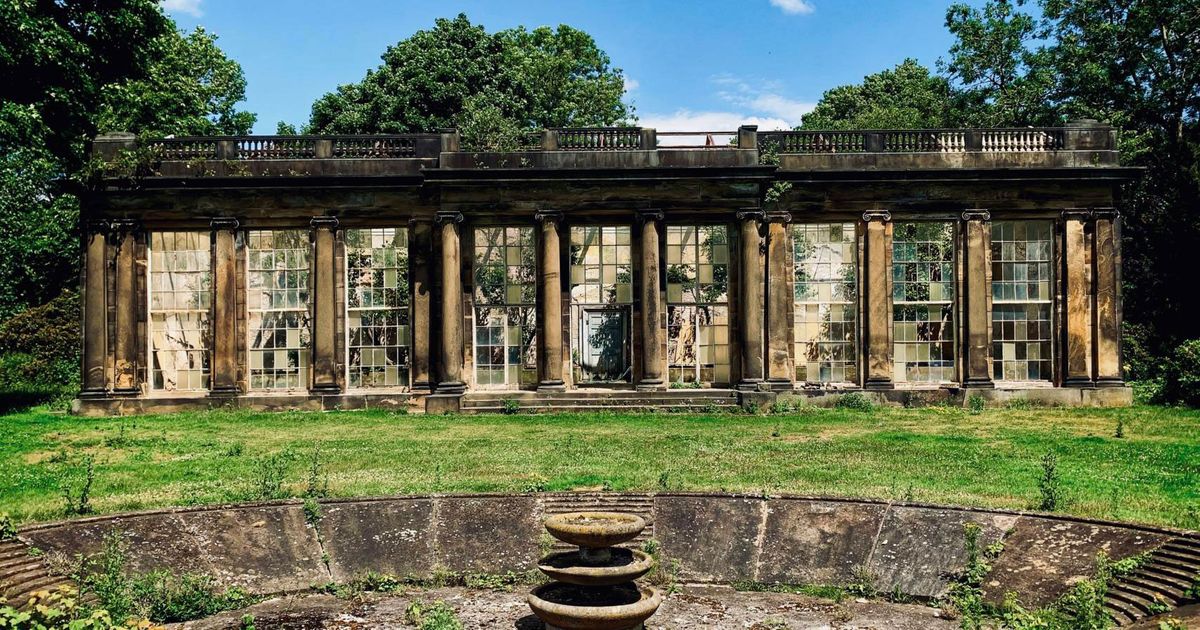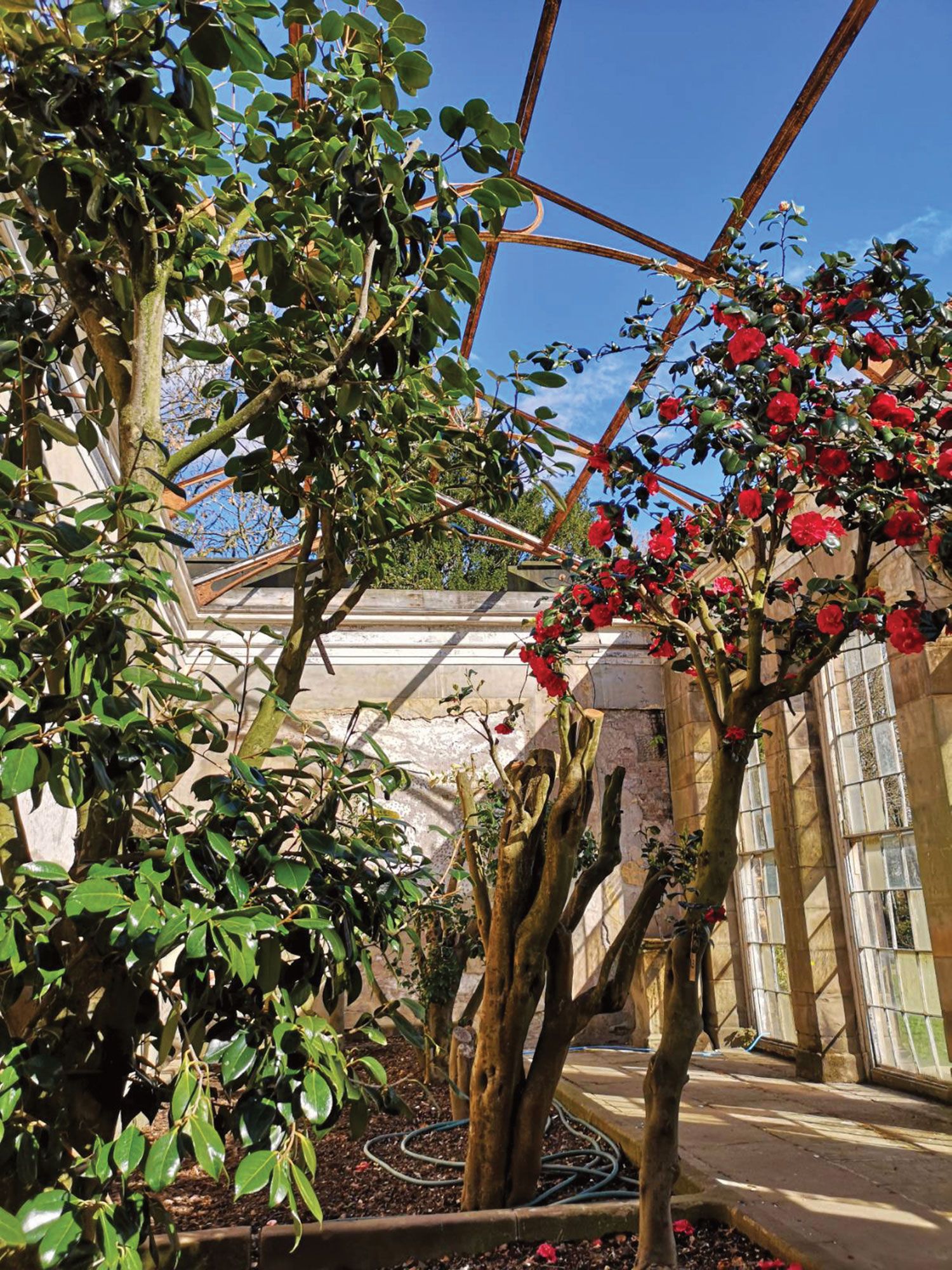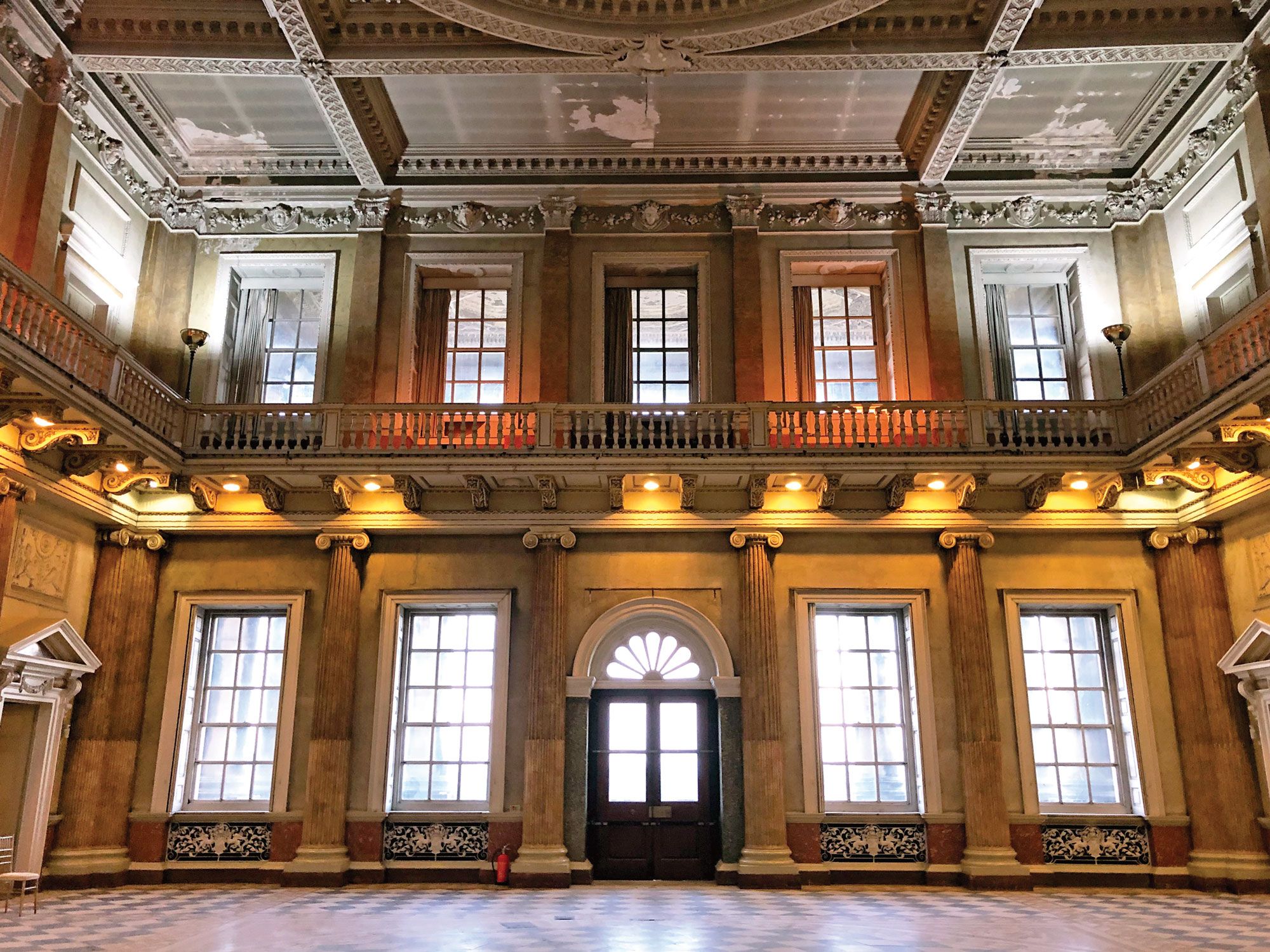
When the rubble of the collapsed roof and smashed windows was cleared and the camellia trees at Wentworth Woodhouse were pruned, the flowers bloomed after more than 250 years at the Yorkshire estate. Restoration work will soon start there on the derelict Camellia House, home to some of the earliest and rarest specimens imported to the UK from China and Japan. Once it is back in operation as a tea room and evening event space, as it was when Lady Rockingham entertained guests in 1738, the Camellia House will in turn start earning money for restoring the main house, one of the most daunting conservation projects in the UK.
Wentworth Woodhouse is not just one stupendous mansion with the longest façade of any private house in Britain; it is effectively two houses, back to back, wrapped around the core of a relatively modest Jacobean manor. The west front was begun in 1725 in an English Baroque style, but barely finished when work began on the 187m-long Palladian east front, for the 2nd Marquess of Rockingham, a Whig grandee who was twice prime minister.

Generations created a triumphantly unmanageable house, with grand state rooms including the stone-pillared entrance hall supporting the stunning double-height marble saloon and, above them, a warren of oddly proportioned derelict rooms, staircases leading nowhere and a maze of corridors linking the two sides. It all adds up to an estimated 365 rooms and 250,000 sq. ft of space. Dorian Proudfoot, the project architect of Donald Insall Associates, says he regularly gets lost despite helpful arrows taped on doors.
When the Rockingham descendants sold the house in 1979, its contents had long been scattered at auction—George Stubbs’s towering portrait of the marquess’s racehorse Whistlejacket is now in the National Gallery. The Grade I house and many listed outbuildings, damaged by open-cast coal mining up to within 10ft of the walls, were also riddled with asbestos, rot, crumbling stonework and shattered roof slates. Surveys predicted total collapse. Two private restoration plans failed, but in 2017 the community-based Wentworth Woodhouse Preservation Trust bought the house for £7m. Work was then estimated at £130m; the best guess now is twice that.

A government grant of £7.6m covered essential roof work, and with further funding from trusts and charities, Historic England, the National Trust and the Lottery, the priority is urgent repairs and making the estate earn its keep. Plans include retail, holiday lets and rented office space. When the pandemic closed the house, the 55-acre grounds opened, emergency grant money was spent on catering trucks to replace the café, and visitors flocked there. The house is also now open again, and the trust hopes that the Camellia House will greet visitors next year.
The trust’s chief executive, Sarah McLeod, a former pub landlady used to dealing with any emergency, measures her time in buckets. When she arrived, the house had one phone, one vacuum cleaner and five staff members whose main task was setting scores of buckets under leaks. The trust now has 57 employees and more than 200 volunteers.
“The worst part of the roof is done, we no longer have water pouring into the state rooms, and I think we’re down to half a dozen buckets,” she says. “There’s a long way to go, but I call that a success.”
Source link : https://www.theartnewspaper.com/news/grand-house-gets-set-to-bloom-again












